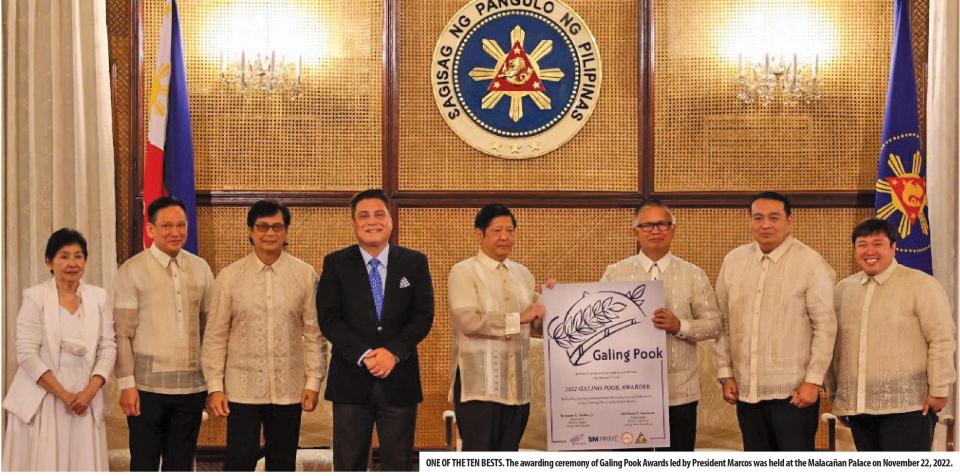Conclusion
REPUBLIC Act (RA) 9184, or the Government Procurement Reform Act, has created the Government Procurement Policy Board (GPPB) in line with further improving the implementing rules and regulations (IRR) of the law and making it more adaptable to the changing procurement environment of the country.
According to GPPB-Technical Support Office (TSO) Executive Director V Dennis S. Santiago, the law also allowed more observers to be included in the project bidding process, thus making the process more transparent.
“It’s also nice to have observers [who] are independent; under RA 9184, you have now a totally independent observer, it will be the Commission on Audit [COA] for the government, non-governmental organizations or civil-society organizations, and then the private sector,” Santiago told the BusinessMirror in an interview. “[They form] the third lens looking into what we are doing in the government; so that procurement now becomes more accountable with the participation of these observers.”
The procurement law had also abandoned the prequalification stage of the bidding process, which was explained to be time-consuming. The prequalification exercise was noted to be a separate process in terms of project bidding that was undergone by the government before that would take around two to three months.
“The experience then was two to three months to do prequalification. This regime was abandoned by the procurement law, it was simplified and included in the bidding process,” added Santiago, who is also a lawyer. “So this is known as the simple eligibility checking. So you lessened the process by two to three months.”
Time requirement
UNDER the law, the shortest period for the procurement of goods takes 26 calendar days, while the longest is 136 calendar days.
For infrastructure procurement, the shortest time is 26 calendar days and the longest takes around 141 calendar days. If the prequalification exercise was added, the procurement process would take around seven months. “Transparency in the law and the IRR are all over,” Santiago said. “The law recognized a singular portal of information on all
government procurement opportunities and that’s the PhilGEPS [Philippine Government Electronic Procurement System].”
Santiago explained every procurement opportunity has to be posted at the PhilGEPS web site, as well as the procuring agency’s web site, and in conspicuous places in the workplace. At a certain budget threshold, of above P5 million, it has to be advertised in newspapers of general nationwide circulation, as among the posting requirement under the procurement law.
“For consulting service, the rule now says if the budget is above P5 million, you advertise in the newspaper; for goods, it’s P10 million; for civil works, above P15 million,” Santiago added. “[If it’s] lower than those values, [there’s] no need to advertise in newspapers. But you still have the three posting requirements.”
Prebidding
A prebid conference is also undertaken as part of transparency initiatives under the procurement law. The prebid conference is an avenue wherein the government and private sector collaborate for a smooth project-bidding process.
“It’s an activity within the procurement process wherein we handhold the bidders. Bidders are given the opportunity to ask questions, clarify and maybe even suggest to the procuring entity what could be the more innovative equipment as opposed to what is being asked,” Santiago explained. “The Bids and Awards Committee will have to explain [some things] to the bidders.”
If the approved budget for the project contract is at least P1 million, at least one prebid conference must be done. If it’s lower than P1 million, it is up to the procuring agency if it will hold a prebid conference. The notice of the conference must be posted in the three posting requirements 12 calendar days before the conference per se to give ample time to bidders.
After the contract is awarded, the information must also be posted in the three posting requirements under the law. The notice of award and the notice to proceed should also be posted.
Standardization
STANDARDIZED bid documents—issued as a template by the GPPB board in 2005—also speed up the bidding process. The document is being used by both the procuring agency and the bidders.
“It already has instructions for bidders, big data sheet, construction of the contract, special conditions of the contract, the parameters are all there to help guide the bidders as they move forward with the preparation of their bids,” he added.
The inclusion of the concept of an approved budget for the contract is seen as a tool to strengthen the procuring system of the country as it prevents “bloated bids.”
“There’s an A, B and C as ceilings for bid prices. So procuring agencies now will have to prepare a very good approved budget for the contract that is judiciously prepared by way of studying the market, doing feasibility studies, even peer reviews,” he said. “When we have that A, B, C [ceiling], it prevents bloated bids.”
In the past, there was no concept of an approved budget for the contract, so bidders will bid more than the approved agency estimate. Now, any bid equal or lower than the A, B, C bid ceiling price will be accepted, while anything higher will disqualified, Santiago explained.
Simplicity
ACCORDING to Santiago, the absence of a “mechanism you call a pass or fail criterion, everything will be subjective.”
“So that’s the point: to have a competitive and a level playing field,” he added. “That’s the purpose of regulating the exercise of discretion to have a level playing field under a competitive setup, wherein bidders will be incentivized to participate in this government opportunity.”
According to Santiago, the only challenge seen in line with the procurement law would be the different agencies’ understanding of the law and how the bidding process works.
“The law was basically explained in the IRR; in one to three readings, you’ll understand the procurement law. It’s very simple,” Santiago told the BusinessMirror. “The challenge, perhaps, is that some agencies are not studying it; some agencies are not looking at it with that degree of seriousness. It’s now the 15th year of the law and sometimes we still get questions that if you had just studied the law it’s very simple.”
Image credits: Nonie Reyes

































